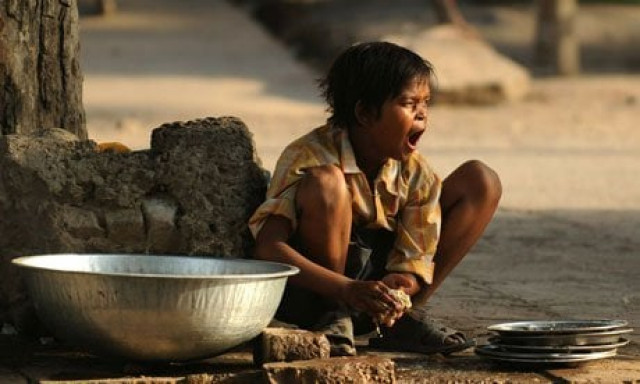A new survey has jolted Pakistan’s conscience: over 1.6 million children in Sindh are trapped in child labour. These are children as young as five, toiling in fields, workshops, and homes, far from classrooms and childhood.
The Sindh Labour Department, with technical support from UNICEF, reports that one in every ten children (ages 5 to 17) is working. It’s a figure that reflects stolen futures and a crisis we’ve come to quietly tolerate.
But behind the headline lies a deeper question: does this number reflect progress or conceal a growing problem?
The Sindh Child Labour Survey 2022 to 2024, Pakistan’s first provincial child labour estimate since 1996, provides a dual narrative — disturbing, yet cautiously hopeful. Officials point to a nearly 50 per cent decline in child labour rates since 1996, when a national survey estimated 20.6 per cent of children in Sindh were working.
Today’s reported 10 per cent suggests that more children are in school, and that child labour laws and education policies may be making a dent. Some have framed this as a milestone. But here’s the truth: 1.6 million working children is not a milestone. It’s a national disgrace.
On the ground, few are celebrating. In the slums of Karachi and villages of interior Sindh, child workers remain as visible and vulnerable as ever. Anecdotal evidence, echoed by child rights activists and development workers, suggests the numbers may be even higher. Rising inflation, pandemic era poverty, and adult joblessness have pushed countless families to rely on children as income earners. In such households, kids become “shock absorbers,” dropping out of school to put food on the table.
This is where the credibility of the data becomes critical. While UNICEF’s involvement suggests technical rigor, many observers quietly worry the number may understate the true scale of the problem. Child labour in informal sectors — like domestic work, bonded agriculture, or small workshops, is notoriously hard to track.
For example, estimates suggest 264,000 children work as domestic servants across Pakistan, often hidden behind closed doors. Surveys rarely reach such children, especially those in remote or marginalised areas. So while 1.6 million is a staggering figure, it may well be a floor, not a ceiling.
The survey’s own findings are grim enough. Over 50 per cent of working children aged 10 to 17 are in hazardous jobs handling sharp tools, enduring long hours, or exposed to toxic substances. Only 40.6 per cent of them attend school, compared to 70.5 per cent of their non working peers. That’s not a gap but it’s a chasm.
Girls face a compounded burden; in addition to labour, they perform an average of 14 hours of household chores per week, leading to higher dropout rates. The data also confirms what we’ve long known that child labour is entrenched in poverty. In the poorest households, one in three children is working.
The psychological toll is no less devastating. One in five working children shows signs of depression, almost double the rate seen among non working children. And geography plays a role too; child labour rates exceed 30 per cent in districts like Tharparkar and Qambar Shahdadkot, compared to just 2.4 per cent in Karachi.
So even if child labour has declined in percentage terms since 1996, the daily reality for millions of children remains unchanged: they are exploited, excluded from school, and denied a future.
Then comes the question of trust. Was the survey overly optimistic? Were certain pockets missed? There is no proven manipulation or bias, but skepticism is healthy especially in a country where no national child labour survey has been conducted in 29 years.
Independent peer review, transparent methodology, and external validation could bolster confidence. What cannot be tolerated is complacency. Whether the number is 1.6 million or 2 million, the conclusion is the same: this is a crisis Pakistan can no longer ignore.
So what should Sindh and the federal government do?
First, enforce the law.
Sindh’s 2017 law bans employing children under 14, and under 18 in hazardous work. Yet enforcement remains weak. Labour inspectors need to be properly funded, trained, and empowered to conduct surprise checks and pursue prosecutions. A culture of impunity prevails because employers know they’ll rarely face consequences. That must change.
Second, reduce the economic pressure on families.
Most children work not out of choice, but necessity. Social protection programs like the Benazir Income Support Programme (BISP) must be expanded but conditional cash transfers that incentivise keeping children in school not institutionalising beggary Poor families need support in the form of food, income aid, and adult employment opportunities so they’re not forced to rely on children’s earnings.
Third, invest in education as the strongest antidote to child labour.
Sindh has over 6 million out of school children many of whom eventually enter the workforce. Schools must be accessible, fully staffed, and resourced. Learning materials, uniforms, and midday meals can boost attendance. For working children, flexible education options like evening classes, vocational training, and on site education at workplaces (for example, at brick kilns or farms) — should be piloted.
Fourth, make child labour data regular and transparent.
Sindh’s survey must not be a one time effort. The province and eventually the country needs a permanent child labour monitoring mechanism, with annual updates, public dashboards, and real time reporting tools. Civil society, academia, and the media should be invited to analyse and critique the data. Visibility builds accountability.
Finally, change the culture.
Too often, child labour is seen as a sad but normal part of life. That must end. We need nationwide awareness campaigns that glorify education and stigmatise exploitation. Religious leaders, media personalities, and youth activists can help reshape public opinion. Consumers also have a role: boycott businesses that openly employ children, and demand clean supply chains.
To be clear: the release of this survey is not a solution. It tells us where we are. But unless we respond with urgency, we risk treating 1.6 million child labourers as a data point, rather than a call to action.
In the end, whether you believe the number is accurate or understated, the moral truth remains unchanged: every one of those 1.6 million is a child with potential, dreams, and rights not a worker. No level of economic necessity or policy inertia can justify their exploitation. The only acceptable number of child labourers is zero. And until we get there, we are all accountable.



COMMENTS
Comments are moderated and generally will be posted if they are on-topic and not abusive.
For more information, please see our Comments FAQ